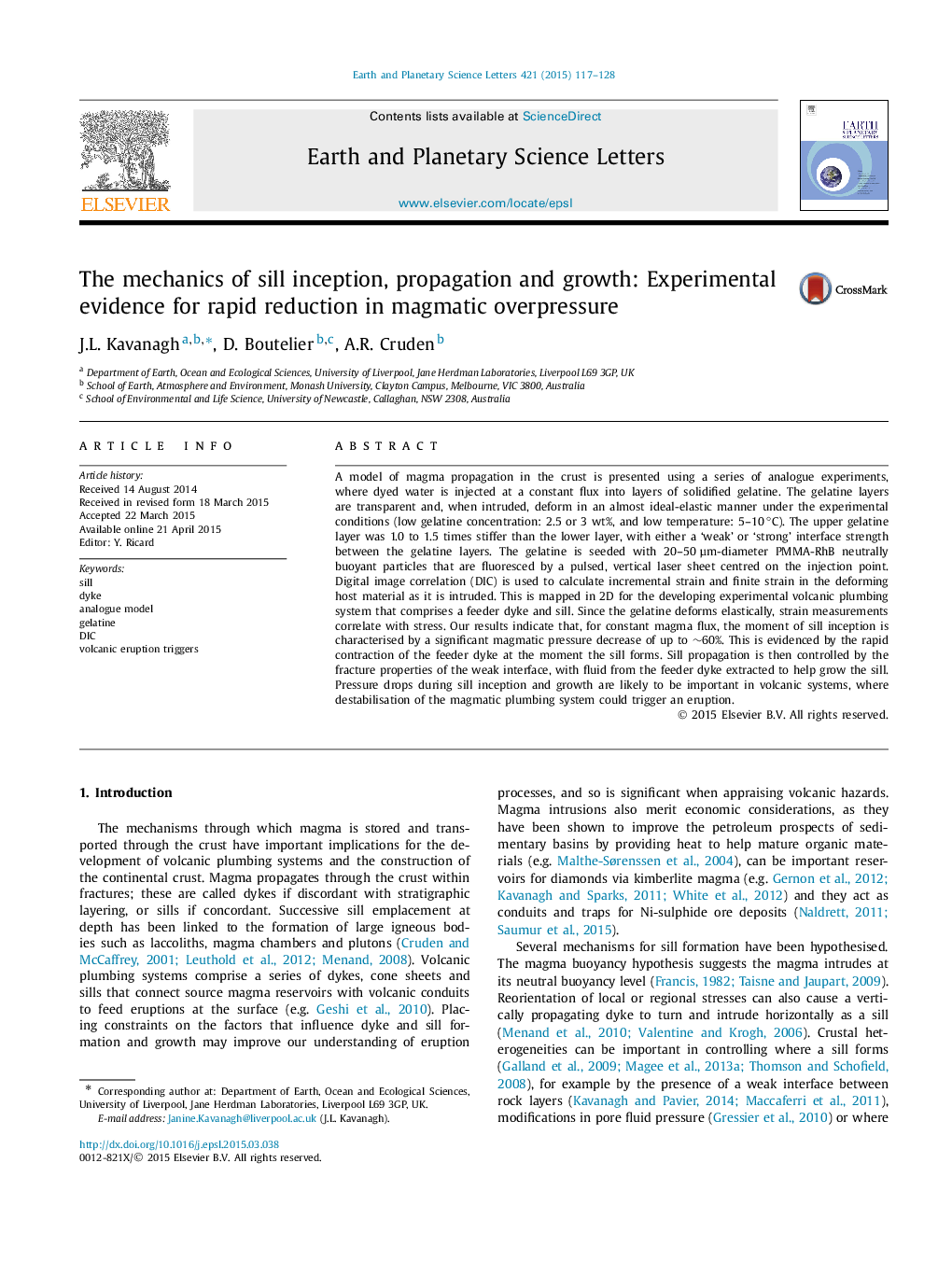| Article ID | Journal | Published Year | Pages | File Type |
|---|---|---|---|---|
| 6428315 | Earth and Planetary Science Letters | 2015 | 12 Pages |
â¢Gelatine analogue experiments model the development of a volcanic plumbing system.â¢Dyed water injected at constant flux into gelatine layers simulates magma transport.â¢DIC documents host strain and stress evolution in response to magma intrusion.â¢Sill inception causes feeder dyke contraction and rapid magmatic pressure decrease.â¢We speculate that rapid pressure reduction via sill inception could trigger an eruption.
A model of magma propagation in the crust is presented using a series of analogue experiments, where dyed water is injected at a constant flux into layers of solidified gelatine. The gelatine layers are transparent and, when intruded, deform in an almost ideal-elastic manner under the experimental conditions (low gelatine concentration: 2.5 or 3 wt%, and low temperature: 5-10â°C). The upper gelatine layer was 1.0 to 1.5 times stiffer than the lower layer, with either a 'weak' or 'strong' interface strength between the gelatine layers. The gelatine is seeded with 20-50 μm-diameter PMMA-RhB neutrally buoyant particles that are fluoresced by a pulsed, vertical laser sheet centred on the injection point. Digital image correlation (DIC) is used to calculate incremental strain and finite strain in the deforming host material as it is intruded. This is mapped in 2D for the developing experimental volcanic plumbing system that comprises a feeder dyke and sill. Since the gelatine deforms elastically, strain measurements correlate with stress. Our results indicate that, for constant magma flux, the moment of sill inception is characterised by a significant magmatic pressure decrease of up to â¼60%. This is evidenced by the rapid contraction of the feeder dyke at the moment the sill forms. Sill propagation is then controlled by the fracture properties of the weak interface, with fluid from the feeder dyke extracted to help grow the sill. Pressure drops during sill inception and growth are likely to be important in volcanic systems, where destabilisation of the magmatic plumbing system could trigger an eruption.
Graphical abstractDownload high-res image (166KB)Download full-size image
